- Home
- Bruce, Leo
Death in Albert Park
Death in Albert Park Read online
By the Same Author:
“SERGEANT BEEF” NOVELS:
Case for Three Detectives
Case without a Corpse
Case with No Conclusion
Case with Four Clowns
Case with Ropes and Rings
Case for Sergeant Beef
Cold Blood
“CAROLUS DEENE” NOVELS:
At Death’s Door
Death of Cold
Death for a Ducat
Dead Man’s Shoes
A Louse for the Hangman
Our Jubilee is Death
Jack on the Gallows Tree
Furious Old Women
A Bone and a Hank of Hair
Die All, Die Merrily
Nothing Like Blood
Such is Death
CAROLUS DEENE “DEATH” NOVELS:
Death at Hallows End
Death on the Black Sands
Death at St. Asprey’s School
Death of a Commuter
Death on Romney Marsh
Death with Blue Ribbon
Copyright© 1964 Leo Bruce
All rights reserved.
Printed and bound in the USA.
First American Paperback Edition 1983
Second printing 1988
Published by
Academy Chicago Publishers
425 North Michigan Avenue
Chicago, Illinois 60611
By arrangement with Charles Scribner’s Sons.
No part of this book may be reproduced
in any form without the express
written permission of the publisher.
Library of Congress Cataloging-in-Publication Data
Bruce, Leo, 1903-1980.
Death in Albert Park.
I. Title.
PR6005.R673D4 1979 823’.912 83-3748
ISBN 0-89733-073-0
One
THE first was Hester Starkey.
She knew as soon as she began descending Crabtree Avenue that someone was following her. She did not at first feel any threat in this, though she did not want to look round in case it might be Grace Buller.
Hester was forty-nine years old, a small neat person who was reputed to be something of a martinet at St. Olave’s Ladies’ College. Senior English mistress, and second in seniority only to Miss Cratchley, the head, she was one of those resolute women who seem to have no difficulty in making up their minds and sticking to their decisions. She would have been pretty but for her thin lips and pallor—the grey eyes were cool and attractive.
She had been kept late that evening by a series of small accidents and just as she was preparing to leave at a quarter past seven, Grace Buller, the games mistress, had started one of her interminable wordy quarrels. Hester had listened impatiently and without ceding a point had eventually left Grace sulky but silenced. Hester passed through the school gates at a few minutes to eight o’clock.
She hated this suburb of Albert Park. “Pretentious!” she had said a score of times looking at the solid Victorian houses. It lay in the remote South East of London, surrounded by Forest Hill, Crystal Palace, Dulwich and Lewisham, a place of grey bricks and houses with gloomy basements built for the prosperous middle classes of the 1880’s. Though threatened by the approach of vast blocks of flats it had so far kept its hideous character because no district railway served its commuters. The park from which it took its name was a green patch of twelve acres where trees dripped on the asphalt paths and a few torn shrubs, intended to flower, had a dank and cheerless existence. This park had been opened by the Prince Consort—one of his last public acts—when the area was still almost rural, but had been quickly surrounded by streets of grey houses.
The park was locked at night, to Hester Starkey’s annoyance for this meant an extra quarter of a mile on her way home. She lived with her brother at Blackheath and went by bus from the corner of Inverness Road, a long street of semi-detached houses running from the foot of Crabtree Avenue towards Lewisham. St. Olave’s was a day-school and several of the staff had cars but Hester, who had never learned to drive, disliked the thought of being instructed and coming to school with an L plate on her car. She was not an L plate person, she once admitted, and the remark was remembered in the Common Room.
That evening, Thursday, February 8, was dark and chilly but there was no fog or snow or driving rain, such as she had known too often on her walks to the bus. The street lamps were infrequent in Crabtree Avenue and she always hurried down its long decline, not because she was afraid but because she found it depressing. People, once home in an area like this, seemed not to like coming out again and the streets were deserted.
The school was darkened when she left it. A man and wife lived there as caretakers at night but no one else remained on the premises. Grace Buller had probably gone down to the gym for her bag (which, someone observed, looked more like a postman’s sack than a handbag) and would come out on her motor-scooter in a moment. Unless it would not start again, in which case Grace would overtake Hester with those great strides of hers and clump along beside her to the bus.
No. The footsteps following Hester were not Grace’s. They were light speedy footsteps—a man’s. Hester braced herself to turn and see who had followed her for two hundred yards now, neither falling behind nor passing her, but keeping a steady two yards or so behind. At the next lamp-post she would turn and face this unpleasant pursuer once and for all.
But at the next lamp-post she did not turn. The end of the street was in sight and she decided to hurry on. After all, whoever it was had not molested her yet, why should he do so now? She would get to the corner of Inverness Road where people were passing and face him there. Give him a piece of her mind, too. It could not be a coincidence. The distance was too carefully kept for that. If he meant to snatch her bag he would find she had a firm grip on it and anyway she had only about three pounds with her. If he had any … other intentions she could look after herself. She greatly disliked the idea of screaming, causing a commotion, being in a street scene, but she would certainly scream if he attempted anything. There were lights on in nearly all the houses of Crabtree Avenue and it would only be a few moments before people came.
But in one house, which she was now approaching, there were no lights for it was empty. She had noticed it before and wondered vaguely how a house could stand empty, even in this district. Perhaps someone had recently died there.
It was in the front garden of this house that Hester Starkey’s body was found next morning. She had been killed by a single downward stroke of some sharp weapon, a butcher’s knife, probably, which had entered at the left shoulder and penetrated straight to the heart. It was a powerful but deft blow made by someone who had probably studied the matter. It had certainly been struck from behind and death had been almost instantaneous.
It was a particularly shocking murder and the Press gave it prominence. As far as could be seen there was no reasonable motive. When the body was found it had been in no way interfered with and Hester’s bag still contained her purse, her keys, her cheque book, while on her wrist was a rather valuable watch. The murderer had simply stabbed her, dragged or carried her into the garden of the empty house, laid her under the hedge there and left her.
She was not a popular woman, at school or at home, but murders are not committed from mere dislike. No one could seriously suppose that poor Grace Buller, for instance, who was known to have rather emotional rows with Hester, would follow her from the school and stab her with a butcher’s knife out of sheer exasperation.
The only person at all close to her was her brother, Eamon Starkey, but not the slightest suspicion could attach to him, for quite apart from the lack of any possible motive he, an actor, had been on the stage of a
small experimental theatre in North-West London that evening and had stayed the night at the flat of a friend in Hampstead as he often did when he was working.
Detective Superintendent Stephen Dyke was rather surprisingly put in charge of the case, a man usually working on even more publicized crimes. It was felt to be a sign that this inexplicable murder of a schoolmistress in a suburb might have greater significance than at first appeared. Dyke was a big man, physically and in his profession, ruthless but efficient. His round, seemingly boneless face with the quick hard eyes staring out from above puffy cheeks was familiar to readers of several newspapers for he was reputed to have brought about more hangings than any other CID man.
He looked for a lead to come in one of two possible ways. Or perhaps, as so often happened, out of the blue. The first of those ways was from enquiries on the spot, from some circumstance connected with the physical act of murder or some clue to be picked up in the area. The second was from Hester Starkey’s life, or someone connected with it.
He was a thorough man and left nothing to chance. The most minute examination was made of the scene of the murder. It was assumed that Hester had been stabbed as she walked down the pavement. The murderer probably knew the district well and had chosen this spot in front of an empty house, afterwards using its garden for a temporary place of concealment for the body. He did not seem to have acted precipitately, laying the body in a position where it was invisible from the road or from the windows of the houses adjoining the empty one (number 46).
Householders in neighbouring houses, and later throughout the whole of Crabtree Avenue, were questioned but with little result. One woman, a Mrs. Sparkett, living several doors away at number 42, thought she had ‘heard something’ adding that ‘you could not call it a scream, really, but definitely something’. Further cross-examination proved that this ‘something’ had happened while Hester was still arguing with Grace Buller at the school.
Another would-be helpful resident, a man named Tuckman, had walked up the avenue an hour before the supposed time of the crime and had ‘seen someone suspicious hanging about’. Pressed for details he admitted that the only cause for suspicion was that he had never seen the man before, and that the stranger was only ‘hanging about’ in the sense that he was looking for a house number. He turned out to be a chartered accountant searching for the home of a Mr. Goggins who lived at number 18.
The crew of every bus which stopped at the corner of Inverness Road at the relevant times were examined but these Jamaicans could supply little information, one saying frankly that all white people looked alike to him and another having an elaborate theory of the crime that he wanted to voice, but no details in the least helpful of the evening in question.
That the murderer had come in a car and left it somewhere in the district was a possibility which Dyke did not ignore but no car park attendant had noticed anything unusual. One had thought a man who drove off at about eight was the worse for drink, as he put it, but as Dyke was not at the moment concerned with a drunk-in-charge case this was not helpful. The murderer, with his cool aim and single downward stroke had been anything but drunk. No car, not customarily standing there at night, had been noticed in Crabtree Avenue or its immediate environs, though round in Perth Avenue there had been a party which had brought a couple of car loads.
The wife of the caretaker of St. Olave’s had come up to the school at about 6:30 and at first raised everyone’s hopes by saying it was funny, that was the night she thought she saw someone under the trees at the top of the avenue. She could have sworn there was someone hanging about there as she came to the school gates. What kind of person? Well, that she couldn’t say. She hadn’t stopped to look. Further questioned she admitted that it could have been one of the girls waiting there, or a policeman on duty, or just a trick of light and shadow, or nothing at all.
The park-keeper was no more helpful. He had made his last rounds at 6 o’clock as usual before locking up at 7. The park was kept open later in summer, he said, but what was the good of keeping open in this weather? It only led to mischief and even now some of the young couples found a way of getting over the railings at night as he bad good reason to know from what he saw next morning. Yes, he had made his rounds and found no one in the park but an old gent who often came there in the evening and was, if you asked the park-keeper, a bit weak in the head but as harmless as a baby. Name? He seemed to think he’d heard him called Mr. Smithers, and somebody had once told him, though he couldn’t be sure, that he lived in Cromarty Avenue.
Duly traced Mr. Smithers turned out to be the retired secretary of a charitable institution who had spent the evening playing bezique with his daughter-in-law. The park-keeper himself, an ex-soldier named Slatter, lived in a lodge at the main gates of the park, which were on the side farthest from Crabtree Avenue, and had heard nothing.
Bloodstains were found at the scene of the murder but examination proved them to be of Hester’s blood group. The weapon was missing but examination of the body confirmed that it was a sharp and powerful knife or dagger, wielded from behind the victim. Routine enquiries were ordered in connection with this but yielded nothing. There was also the possibility that bloodstains were on the murderer’s clothes and this led to the usual alert to cleaning firms, but again with no result.
Everyone was, as usual, too anxious to be helpful, too full of details of no possible relevance. A couple of lunatics came forward, according to precedent, to confess that they had committed the crime, but one of these had been in Bristol at the time and the other had confessed to every major murder since the Green Bicycle Case. Local enquiries in fact failed to produce anything to go on and after an Inquest had found it was a case of murder against a person or persons unknown, Hester was buried in the local cemetery, the senior girls from St. Olave’s, with express permission from their parents, attending the ceremony and weeping as they had never thought to do at the departure of “The Stark”.
Dyke’s more personal enquiries led to little enlightenment. He found Hester’s brother Eamon a particularly irritating man, not too intelligent but with an excellent opinion of himself. He had already given statements to every newspaper which would agree to publish his picture and to mention the name of the play in which he was appearing. His sister, he told Dyke, was a woman of dominant personality but so far as he knew she had no enemies. Her only friend was a fellow-teacher at St. Olave’s, a Miss Gerda Munshall, with whom Hester took her summer holidays abroad. There were no near relatives beyond the usual aunt in St. Leonards-on-Sea and a cousin of the father’s, a rich woman called Dobson, from whom there were vague expectations. Eamon Starkey thought, as he airily smoked a cigarette, that his sister had probably been murdered by a sex-maniac and wondered that the police left such people at large.
Poor Grace Buller, a very large young woman with spaniel eyes and mighty calves, found it difficult to answer questions because she wept too easily and remembered that the last words she exchanged with Hester were bitter ones. She gave a full account of the quarrel and lamented that but for her motor-scooter failing to start she might have been on the spot to save Hester. She had, in fact, ridden home twenty minutes after parting from Hester and ‘must have passed the very spot soon after it happened’. More tears. Hester, she added gratuitously, was the last person you would expect to be murdered. Why? Well, she was. You’d never have believed it possible. She was so … self-possessed.
Dyke’s toughest interview was with Miss Cratchley, the headmistress, a remarkable woman who had ruled the school for eighteen years and was not going to lose her poise over the murder of her senior assistant or the intrusion of a senior policeman. She gave Dyke an interview as soon as he asked for it but made it plain that it was to be on her own terms and in her own study. Long able to intimidate staff and parents alike, not to mention her pupils, she anticipated no trouble from a Detective Superintendent and began by telling Dyke that he was wasting his time in making enquiries at the school.
“What in the world do you expect to find here?” she asked haughtily. “A plot by my senior girls to get rid of an unpopular mistress?”
“That’s not quite the point, Miss Cratchley.”
“Then what is the point? The girls see you round the place and have quite enough nous to know what you are. It’s liable to start the wildest stories. Already I have had parents ringing up to ask if their children are going to be questioned.”
“They may have to be,” threatened Dyke.
“Rubbish,” said Miss Cratchley, getting a deal of expression into her pronunciation of the word. “What on earth could the girls know about it? They were all at home long before Hester left the school that evening.”
“In a case like this …”
“May I ask if you’ve ever had a case like this, Superintendent?”
“Not exactly the same, of course, but we’ve had women being stabbed before in very similar circumstances.”
“Oh, you have. With no possible motive of gain? With no evidence of any sexual aberration on the part of the murderer? With no passion or jealousy or hatred involved?”
“As for those three, we have no evidence in this case either way. But they can supply a motive in the most extraordinary cases. A woman does not need to be young and attractive to rouse passion, or jealousy or hatred, as you name them.”
“I see. So you think poor Hester Starkey was a femme fatale, Superintendent?”
“I said there was no evidence either way.”
“But you infer that she may have been. You did not know her, you see. She was cold and utterly self-sufficient. A clever teacher, oh yes. A woman of some organizing ability, when properly directed. But no more capable of arousing passion of any kind than a brick wall. No, my dear Superintendent. You are barking up the wrong tree. Look outside for your murderer and remember that it was chance which made him pick on Hester. Pure chance. He is a man with a lust for killing, that’s all. A Jack the Ripper. It is the only possible explanation.”
Dyke, who was already secretly inclined to agree with her, nodded and went on to routine questions.

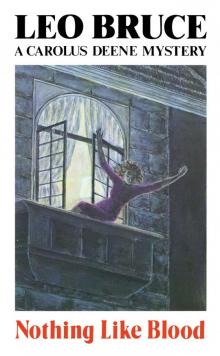 Nothing Like Blood
Nothing Like Blood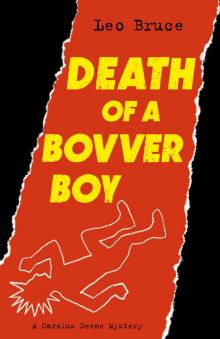 Death of a Bovver Boy
Death of a Bovver Boy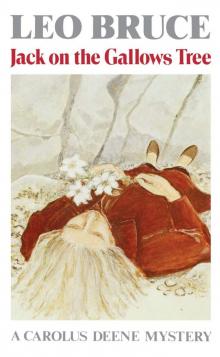 Jack on the Gallows Tree
Jack on the Gallows Tree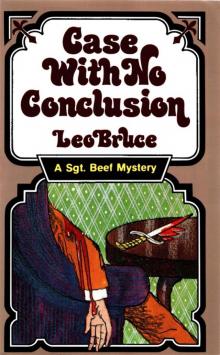 Case with No Conclusion
Case with No Conclusion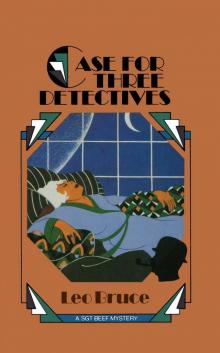 Case for Three Detectives
Case for Three Detectives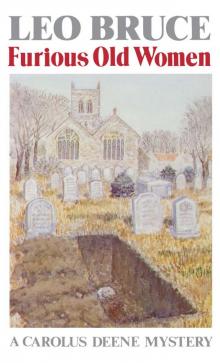 Furious Old Women
Furious Old Women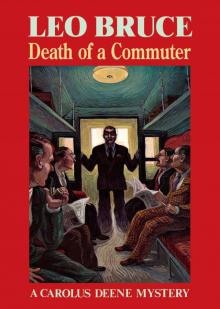 Death of a Commuter
Death of a Commuter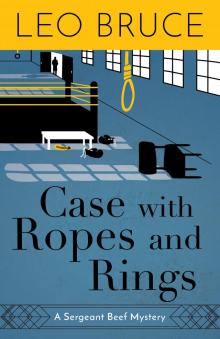 Case with Ropes and Rings
Case with Ropes and Rings Dead Man’s Shoes
Dead Man’s Shoes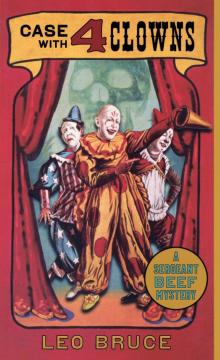 Case with 4 Clowns
Case with 4 Clowns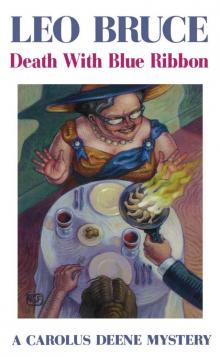 Death with Blue Ribbon
Death with Blue Ribbon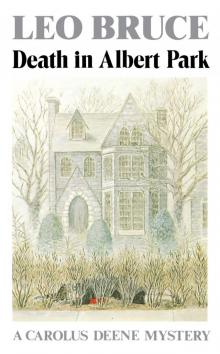 Death in Albert Park
Death in Albert Park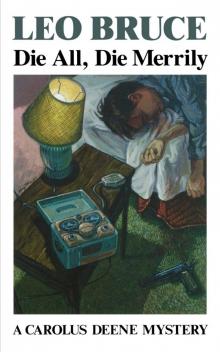 Die All, Die Merrily
Die All, Die Merrily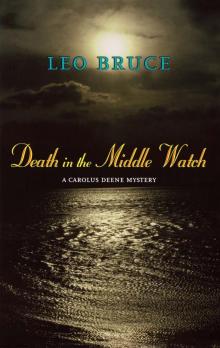 Death in the Middle Watch
Death in the Middle Watch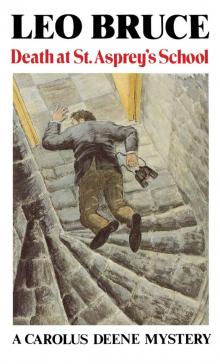 Death at St. Asprey’s School
Death at St. Asprey’s School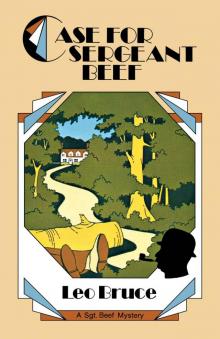 Case for Sergeant Beef
Case for Sergeant Beef